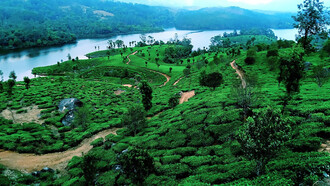Peruvian beaches are well-known among surfers worldwide. But the Negritos salt flat at the most western corner of the South American continent is still little known and not only appreciated by surfers. Esward Urgiles shares his impressions.
The most well-known salt flat in Latin America that perhaps many of us have known about is the salt flat of Oyuni in Bolivia. Impressive photographs have been shown in media. But reaching that area is hard and the high and extremely dry environment is harsh. In Peru instead, without entering that far into the highlands we can find a salt flat right at the coastline. A large salt flat on the northern coast close to the city of Talara.
Talara, an important oil and military center in Peru
Talara is a city in the Talara Province of the Piura Region, in northwestern Peru. It is a port city on the Pacific Ocean with a population of 91,444 as of 2017. Its climate is hot and dry. Talara is the westernmost city in all of mainland South America. (A small outlying town, Seccion Dieciocho, is situated slightly further West, and just beyond there, the land itself reaches its westernmost extent at Punta Pariñas.) Talara and some neighbouring cities (Piura and Amotape) served as the backdrop for the short novel Who Killed Palomino Molero? by Mario Vargas Llosa.
The Salar de Negritos, a tourist site just a few minutes from Talara
Only 15 kilometers from Talara, Negritos is located at the westernmost point of South America. What makes this place special and remarkable is an obvious long white blanket that covers the Brea district. This place, also known as the salt flat of Negritos (Salar de Negritos), offers a spectacular view and invites to take excellent landscape photographs.
Esward Urgiles, a photographer living in Lima and working in the publishing industry, visited the salt flat of Negritos to take aerial pictures.
“I went on vacation and decided to visit my family in Talara, without a doubt it filled me with excitement to return to the North, eat a delicious ceviche, change the gray sky of Lima for the sunny North and, of course, take advantage of knowing that salt flat my brother had mentioned a year ago. A day before going to the salt flat of Negritos I went together with my nephew Piero to look for a taxi in Talara. That was not very difficult and for about $ 13 we were offered to go by car, the driver was very kind and offered to take us and wait for an hour and a half while I took my photos and aerial shots.”
Esward explains us the salt flat phenomenon at the coast in the district of La Brea in Negritos:
“These salt flats are also known as the salt mines of the department of Piura on the North coast of Peru. When the tide goes out and the sun evaporates the waters of the sea it leaves a great white blanket of sea salt. After the evaporation of the seawater, the salt remains exposed on the surface.
This unusual and inspiring landscape is only 2 hours from the city of Piura, in the province of Talara, and so close to the westernmost tip of the South American continent this wonderful landscape is worth visiting and recommending, since it is easy to reach.”
From what I could verify on my trips to the most popular northern beaches of Peru, like Máncora and Lobitos, Negritos is still little known. Negritos is definitely worth a visit. The Negritos salt flat is only 2 hours from the city of Piura and just 10 minutes from Talara by car.
Around Negritos you will find even more site to worth to know, a petrified forest and the archaeological remains of La Brea.
There are regular direct flights from Lima (LIM) to Talara (TYL). From there to Negritos, which is 10 minutes away, and then to the beach of "Punta Balcones", that is about five more minutes from the Negritos salt flat.















